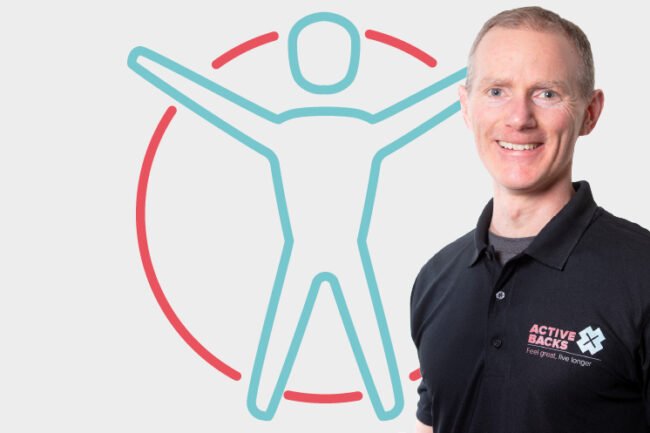Types of lower back pain
Types of lower back pain
Today’s episode is entitled “Types of lower back pain” and the main points are:
- Pathological type of lower back pain
- Mechanical radiculopathy type of lower back pain
- Non-specific lower back pain
- How to differentiate between the types

Pathological type of lower back pain
This is the least common of the types. So it’ possible you have a pathology on your lower back causing pain, but this is only the case less than half of the times. Pathology is a disease process that can be metabolic, infection, degeneration or neoplasms (tumors). This isn’t a type you should focus on, unless you answer yes to one or more of the safety questions.
This is the least common of the types. So it’ possible you have a pathology on your lower back causing pain, but this is only the case less than half of the times. Pathology is a disease process that can be metabolic, infection, degeneration or neoplasms (tumors). This isn’t a type you should focus on, unless you answer yes to one or more of the safety questions.
Mechanical radiculopathy type of lower back pain
can cause a mechanical radiculopathy. The joint of the two and the disc, because it’s adjacent to that gap as well, and it forms part of the perimeter surrendering of that gap. So you’ve got a vertebra above bone and a bone and disc in between. The bones have a very irregular shape and they form a small aperture through which the radicular nerve .
If the anatomy of that hole changes, you can get pressure on the radicular nerve. Disc prolapses, bulges and herniations can go into that space and impact the radicular nerve causing a radiculopathy. The bones themselves can cheat too. And most commonly, this is related to wear and tear. So you get bony outgrowths called exostosis or osteophytes where the bone changes, shoot bits of bone growing off.
type of lower back pain
This means you have a pathology or mechanical ridiculopathy. There isn’t an easily identifiable physical cause for your pain. Within that, there is a lot of nuances. There’s a number of things you can do to determine what’s most likely to be a big factor in your non-specific lower back pain, whether it’d be muscle ligament, tendon, and things like instability. And once we’ve excluded the pathology and the mechanical radiculopathy, we’re left with this non-specific lower back pain group.
So long as you stick to some pretty simple principles, you can get better. N lower back pain i melting pot of all sorts of possible mechanical things that can be going on in your lower back, whether that be an acute, recent onset sciatica strain. But what are the risk factors for lower back pain, the risk factors that pushed you closer to the edge of that cliff of pain? If you don’t identify them, you’re going to keep having recurring episodes.
How to differentiate between the types
Go to and take the free assessment. There’s a series of safety questions. If you yes to one or more of those questions, you may have a pathological type of lower back pain. Less than half a percent of people who have a pathological cause of lower back pain, but to be sure, answer the questions and you’ll get a PDF report fired out to off the back of that engagement. Not only will it help you tell whether you’re in that pathological group, but it will also tell you the different exercises you’re best suited to do.
You have mechanical radiculoptahy if you have an irritation to a spinal nerve that gives you pain somewhere along it. If you have pain and or pins and needles radiating down your leg, you may have a mechanical radiculopathy. However, you could have referred pain, not due to direct pressure on a nerve, but just this kind of referred mechanism. If you don’t have pain or pins and needles below the knee, it’s more likely that the pain you have radiating down your leg is due to referred pain. If you have pain, or pins and needles below the knee, if the pain below is worse than the pain above the knee, it’s more likely to be a radiculopathy.
For the non-specific lower back pain, it’s a diagnosis of exclusion. If you don’t have a pathology, if you’ve answered no to all the safety questions and you don’t have pain radiating down your leg, or even if you do, if it doesn’t seem to be a mechanical radiculopathy, then we’re left with non-specific lower back pain.


